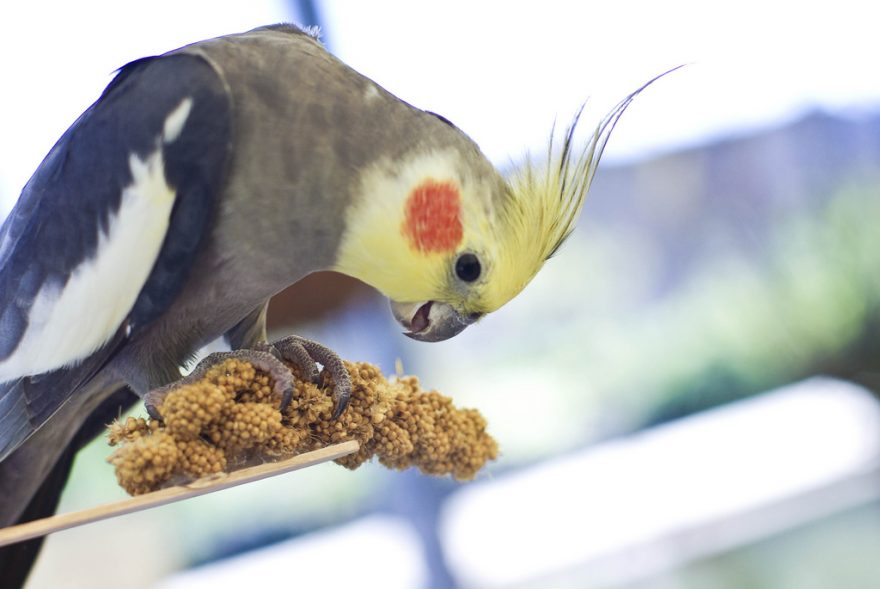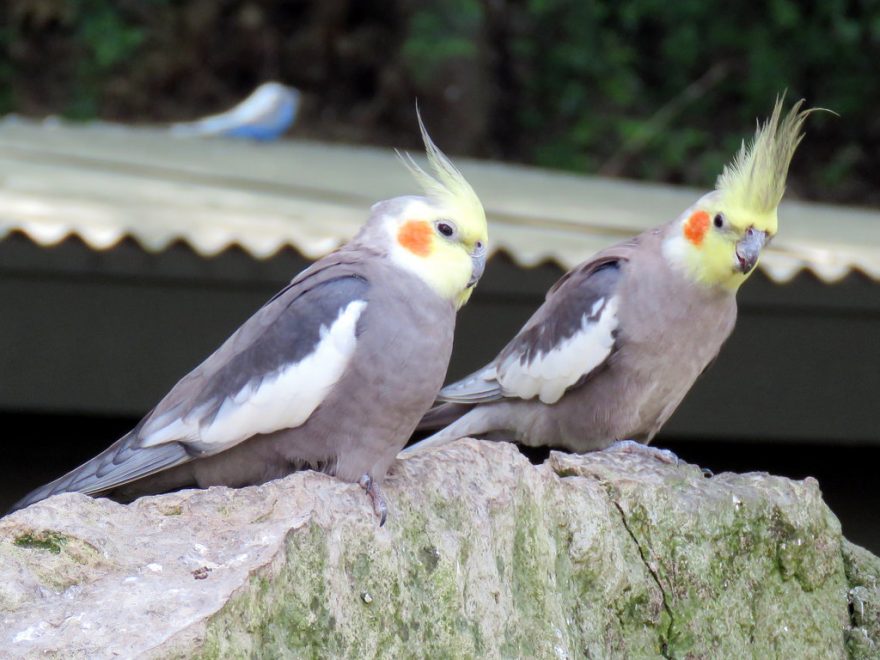Cockatiels, sometimes called quarrions or weiros, are small-medium sized parrots found throughout inland Australia. Their low care requirement and outgoing nature have made them one of the most popular pet bird species in the world, second only to the budgerigar.
Cockatiels are readily and cheaply available throughout the world, but expect to pay more for rare color mutations.

Housing & Compatibility
Cockatiels can be kept in a wide variety of different aviary types, including cages, traditional aviaries and suspended flights. An adequate amount of flying space is necessary to ensure good fitness and minimal stress.
They are generally considered to be non-aggressive and can be housed successfully with other placid parrot and finch species. Levels of aggression vary between individual birds so it’s important to monitor the aviary diligently, especially in smaller aviaries or aviaries containing breeding birds.
Best breeding results are achieved in single pair aviaries, but they will also have moderate breeding success in a colony situation.
Non-toxic leaves and branches should be provided for chewing. They will be destructive to foliage in a planted aviary.
Breeding
Cockatiels are prolific breeders. A pair will breed throughout the year if conditions are maintained, so it’s sometimes necessary to remove nests to prevent the hen from suffering health consequences related to overbreeding. Breeding in summer and winter should be discouraged, especially in regions that experience extremely hot or cold temperatures.
Hollow logs or commercial “cockatiel sized” nest boxes should be provided for breeding. Multiple should be placed throughout the aviary to allow the birds some degree of choice on size and location. The next box should contain a substrate of sawdust or shaved pine. Most parrots prefer a nest box opening just large enough to squeeze through, so a separate hatch for cleaning and inspection should be added to the nest box.
The nest will become quite messy and must be cleaned between clutches. Cockatiels will generally produce three clutches per year; further clutches should be discouraged.
The hen will lay 4-6 eggs which are incubated by both birds for 23 days. Nest inspections are generally tolerated when the parents are outside of the nest. Young birds will fledge approximately a month after hatching and become fully independent after another month. Young birds will be disruptive of their parents subsequent breeding efforts and should be removed into another aviary when possible.
Sexing
DNA sexing is the most reliable way of accurately determining the gender of your bird. Cockatiels can generally be sexed visually, however some mutations conceal gender-specific attributes and must be DNA sexed.
Male cockatiels have brighter yellow head coloration than females, who have a more subdued yellow/grey coloring and less defined cheek patches. The male’s tail is completely grey on the top and bottom, while the female’s tail has barring on the underside.
Mutations
There are dozens of cockatiel color mutations available. An uncommon mutation will demand a much higher price than one that’s more readily available. Similarly, the proliferation of mutation birds has significantly increased the rarity and cost of “pure normal” birds.
The most popular mutations are lutino (yellow) and albino (white). A labelled gallery of established mutations can be seen here.

Diet & Feeding
A quality small parrot seed mix forms the basis of the cockatiel’s diet. Seed should be stored in an airtight plastic container to prevent exposure to vermin and moisture. Seed can be soaked or sprouted to improve its nutritional value.
A good diet includes a mix of fruits and vegetables, such as apple, pear and corn. Leafy green vegetables are essential; silverbeet (chard), bok choy, kale and endive are particularly enjoyed.
Many breeders prefer to feed pellets instead of seed. Pellets provide a more balanced intake of vitamins and minerals and produce less waste. Commercial supplements such as egg & biscuit mix can be added to the diet to provide additional protein during the breeding season.
Health
Cockatiels are hardy and resilient birds, however poor hygiene or overcrowding will quickly result in sickness and death. Water bowls should be cleaned daily and droppings should be removed frequently.
A strict worm control regime and regular preventative treatment for bacterial and fungal infections is critical to ensure the long-term health of any bird.
A well cared for bird should live between 15-20 years. Some have been known to live for 30 years.
As Pets
Cockatiels make excellent pets. Males are generally superior at talking and mimicking.